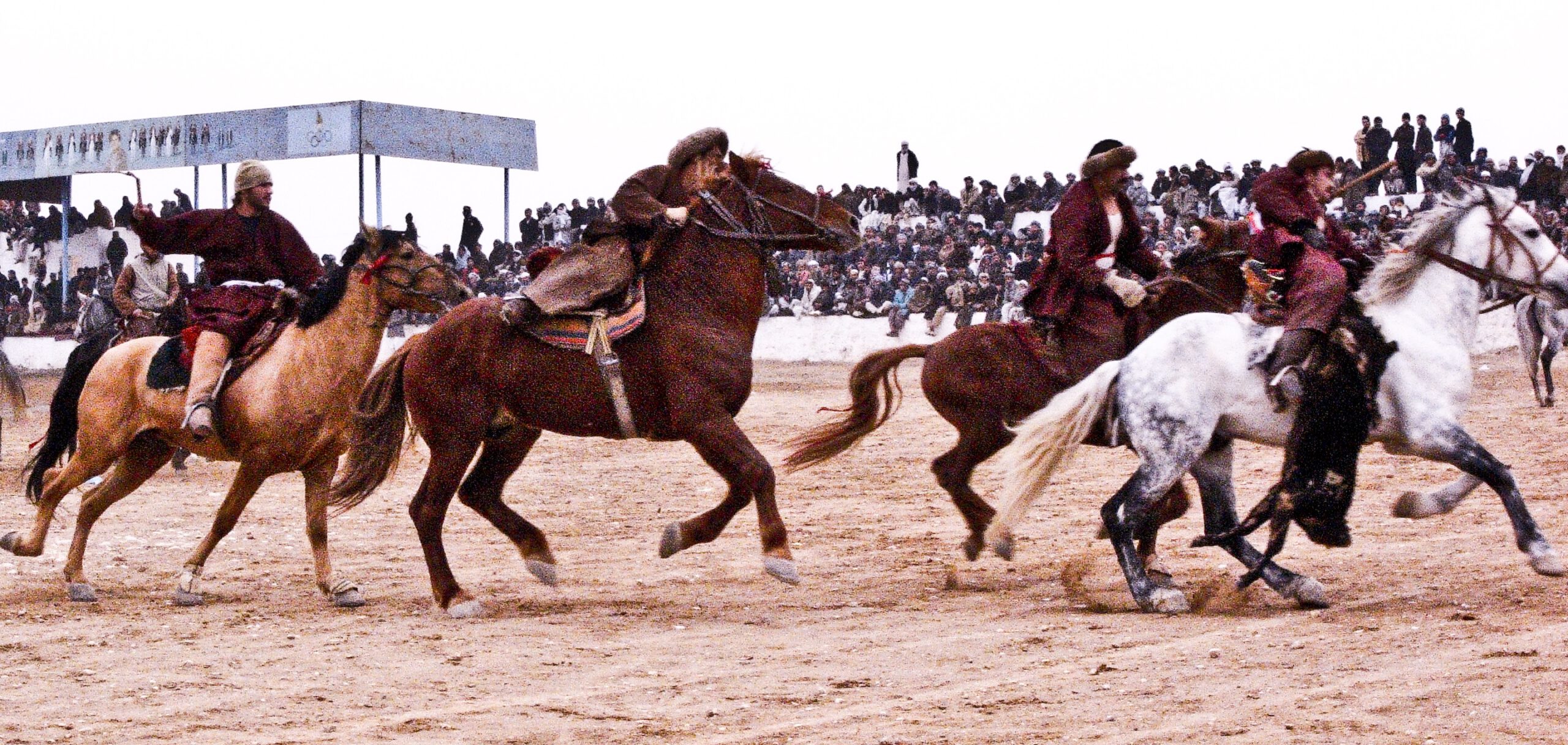The great game, what Kessel called “the game of kings”, no longer stirs the dust of the Afghan steppe. The gates of Afghanistan have closed on the forbidden, and buzkashi is one of them. And yet, buzkashi was a necessary confrontation between tribes, valleys, and regions: an obligatory passage for the recognition of an equestrian aristocracy who showed their knowledge not through their courage – no man lacked it – but through their immense science in preparing the mounts that would make them centaurs and, for the victor, a national hero.

The origins of Buzkashi
Bozkachi (from Persian: goat puller) was in fact much less a game than a formidable test in which each tchopendoz (rider) risked his prestige, pride, honor, and the reputation of his tribe. And it was on horseback that he defended these essential values as he attempted to seize the Boz, the headless, sand-filled goat, which he had to take deep into the steppe to ride around a pole stuck in the ground before setting off on the return journey to the halal, a circle traced in the ground with lime, the starting and finishing point of the race.
With talpali up to their ears and whip between their teeth, the tchopendoz – sometimes numbering in the hundreds – would then set off for long hours of pursuit in a wild and crazy ride where strength, endurance and violence were as unheard-of as the equestrian prowess of the tchopendoz and the stamina of their mounts.
Buzkashi today
All that remains of the “real” Bozkachi is the wonderful story of Ouroz, son of Toursène, the hero of Kessel’s novel. Time will one day bring back that which cannot be extinguished, and halal will once again see the howling hordes in pursuit of the goat-bearer.
To find out more: another reference on buzkashi


